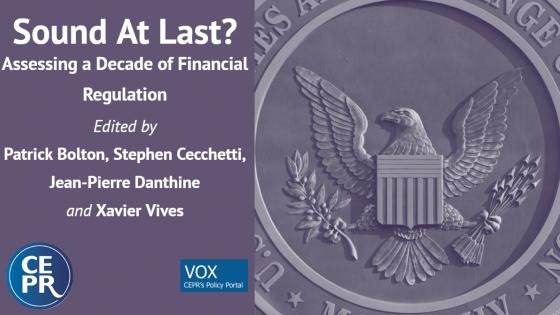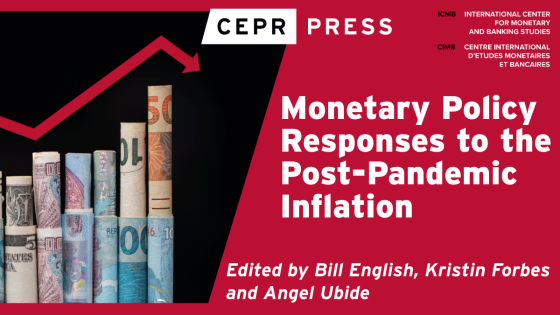What has changed since the 2007-2009 crisis to ensure that the financial system is sound at last? Is regulatory reform going in the right direction? Has it run its course?
One major challenge for regulatory reform is to gather the necessary political support to move it forward. Regulators need to have enough powers to deal with major crises. However, the unpopularity of measures for dealing with crises has led several jurisdictions to curtail the power of regulators to respond, with the aim of ‘ending bailouts forever’. For example, Ben Bernanke, Timothy Geithner, and Henry Paulson (the latter two both former US Treasury secretaries) stated in September 2018 that “… in its post-crisis reforms, Congress also took away some of the most powerful tools used by the FDIC [Federal Deposit Insurance Corporation], the Fed and the Treasury. Among these changes, the FDIC can no longer issue blanket guarantees of bank debt as it did in the crisis, the Fed’s emergency lending powers have been constrained, and the Treasury would not be able to repeat its guarantee of the money market funds. These powers were critical in stopping the 2008 panic” (Bernanke et al. 2018).
In the euro area, political constraints are delaying the completion of the Banking Union, including a common deposit insurance scheme and a backstop for the banking system. There is a danger that the unrealistic commitment not to use public money, even in the face of a macroeconomic shock, will undermine current EU resolution procedures, as was the case with the recent treatment of certain banks in Italy.
Download the new report, Sound at Last? Assessing a Decade of Financial Regulation, here
In the first report in a new series on "The Future of Banking" from the IESE Business School and the CEPR, we argue that while there have been clear improvements in financial regulation and supervision over the decade since the global financial crisis, there is still work to do in several crucial areas and political constraints may bite (Bolton et al. 2019). The report, titled Sound at Last? Assessing a Decade of Financial Regulation, tackles three important areas of post-crisis regulatory reform: the Basel III agreement on capital, liquidity and leverage requirements; resolution procedures to end ‘too big to fail’; and the expanded role of central banks with a financial stability remit.
A legacy of the crisis is stronger and better capitalised banks, as well as regulators and supervisors with increased clout who pay more attention to systemic risk. However, the crisis has also left us with high leverage in advanced economies, especially in terms of sovereign debt-to-GDP ratios. At the same time, interest rates are at very low levels. All of this, together with the digital disruption of the sector, poses formidable challenges for the banking industry.
A first broad message of the report is that narrow banking is not a magic bullet to overcome the fragility of the system. The narrow bank ‘solution’ always emerges after a systemic crisis, and the 2007-2009 crisis was no exception. Fragility is inherent to the core banking function of joint supply of credit and deposits. If narrow banking were to be implemented, fragility would resurface elsewhere in the financial system.
A second broad message is that prudential regulation should take a holistic approach, considering and setting requirements for capital, liquidity and disclosure together and taking into account their potential interactions, together with the competitive conditions of the industry.
More specifically, we find that there is room to fine-tune regulation:
- We do not know whether current levels of capital are enough, but we believe it is better to err on the high side (as long as increased capital requirements are not imposed when the economy is weak). The interaction between leverage and risk-weighted capital must be explored so that no perverse incentives are introduced inadvertently.
- The introduction of liquidity regulation is an important innovation, but we question the need for two requirements. We believe that authorities should explore modifications to the liquidity coverage ratio that would make the net stable funding ratio unnecessary.1
- Stress tests are very useful if well designed. A main lesson from the euro area is that effective stress tests can only be implemented when there is a backstop for the banking system. To remain effective, the tests must be severe, flexible, and not overly transparent. Current practice could be improved by taking into account second-round effects.
- Regulation inevitably leads to innovation aimed at escaping the new rigorous oversight. To ensure that an ever-changing financial system remains resilient, authorities need a framework to monitor, assess, designate, regulate and supervise entities outside the perimeter of regulation. As of today, there is still no framework for dealing with shadow banking and new digital competitors.
A second broad message is that the new resolution framework constitutes a major institutional advance in resolving systemically important institutions. However, a public backstop is needed even under the most refined resolution procedures. The too-big-to fail (TBTF) problem has been alleviated (with the caveat on the effect of new regulations on concentration and size of banks), but it has not gone away. Indeed, new regulations and high compliance costs make entry difficult and have increased the tendency for concentration, potentially aggravating the TBTF problem.2 In addition:
- Resolution needs liquidity support but current procedures are lacking, particularly in the euro area.
- Better resolution provides good incentives for managers and allows for more competition in the market.
- There are complex trade-offs in the choice between a single point of entry (SPOE) model and a multiple point of entry model (MPOE) model. For the resolution system to be stable, the incentives of national authorities before and during a crisis must be contemplated (for example, national authorities may decide to ring-fence capital and liquidity ex ante, or refuse to abide by an agreement when it turns out to be unfavourable). The theoretically superior SPOE model may face formidable implementation challenges and turn into MPOE in practice (Bolton and Oehmke forthcoming).
A third broad message is that the central bank has to recover its traditional financial stability remit, and this more powerful central bank needs strengthened accountability and democratic legitimacy. We contribute to the debate over the functions of central banks and the regulatory financial architecture. More specifically:
- The central bank should be prepared to use its balance sheet as a financial stability tool, although what the steady-state size of the balance sheet should be is an open question.
- We look favourably on the idea that central bank liquidity insurance should be priced, but we are wary of potential adverse consequences on credit provision to the economy when collateral is lacking.
- With respect to the financial supervisory architecture, we favour an expanded role for central banks encompassing financial stability. Under an integration (‘one roof’) view of the central bank functions (as in the UK), the central bank has both a price stability and a financial stability mandate, and consequently it should have a transparent lender-of-last-resort function as well as macroprudential authority with appropriate tools.3 Microprudential supervision should be well coordinated with, or even integrated into, the central bank and an independent authority should take care of conduct and consumer protection, yielding a ‘twin peaks’ regulatory architecture. At the other extreme, under a ‘many roofs’ regulatory financial architecture, the central bank cares only about price stability, and both macroprudential and microprudential supervision are run by separate independent institutions. Our view is closer to the former model than the latter.
- To insure the legitimacy of delegating increasingly broad powers to an independent institution, and to preserve central bank independence, the framework and the principles of communication for the case of monetary policy should be applied to the decisions of the single institution or of the collective in charge of financial stability.
- More intensive coordination between monetary and fiscal authorities is needed, particularly when the zero lower bound is reached. A regular exchange among authorities on policy options should then be encouraged, including public communication of policy choices and the trade-offs involved.
We do not know where the next crisis will hit. But if the past is any predictor of the future, we can be sure that entities that perform the functions of banks, but are outside the regulatory perimeter, will play an important role. Furthermore, the next global crisis may have its origins in an emerging market, where regulation may well be different from the structure adopted in advanced countries. A challenge for incumbent banks will be to adapt to the digital disruption and more competitive environment, while regulators will have to maintain a level playing field, protecting financial stability while allowing the benefits of innovation to permeate the system.
References
Bernanke, B, T Geithner and H Paulson Jr (2018), “What We Need to Fight the Next Financial Crisis”, New York Times, 7 September.
Bolton, P, S Cecchetti, J P Danthine and X Vives (2019), Sound at Last? Assessing a Decade of Financial Regulation, The Future of Banking 1, CEPR Press.
Bolton, P and M Oehmke (2019), “Bank Resolution and the Structure of Global Banks”, Review of Financial Studies (forthcoming).
Cecchetti, S G and A K Kashyap (2018), “What Binds? Interactions between Bank Capital and Liquidity Regulations”, in P Hartmann, H Huang and D Schoenmaker (eds), The Changing Fortunes of Central Banking, Cambridge University Press, pp. 192-202.
Danthine, J P (2015), “Macroprudential policy in Switzerland: the first lessons”, Next Steps in Macroprudential Policies Conference, Columbia University (summary on VoxEU.org).
Vives, X (2014), “Strategic Complementarity, Fragility, and Regulation”, Review of Financial Studies 27(12): 3547–3592.
Vives, X (2016), Competition and Stability in Banking: The Role of Regulation and Competition Policy, Princeton University Press.
Endnotes
[1] See Vives (2014) and Cecchetti and Kayshyap (2018) for further analysis on this point.
[2] See Vives (2016) for a full analysis on the interaction of competition and regulation in banking.
[3] See Danthine (2015) on the Swiss experience.







